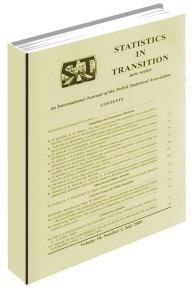APPLICATION OF THE STRATEGY COMBINING MONETARY UNIT SAMPLING AND THE HORVITZ–THOMPSON ESTIMATOR OF ERROR AMOUNT IN AUDITING – RESULTS OF A SIMULATION STUDY
APPLICATION OF THE STRATEGY COMBINING MONETARY UNIT SAMPLING AND THE HORVITZ–THOMPSON ESTIMATOR OF ERROR AMOUNT IN AUDITING – RESULTS OF A SIMULATION STUDY
Author(s): Bartłomiej JanuszSubject(s): Business Economy / Management
Published by: Główny Urząd Statystyczny
Keywords: audit sampling; Monetary Unit Sampling; Horvitz-Thompson estimator; error distribution
Summary/Abstract: Auditors need information on the performance of different statistical methods when applied to audit populations. The aim of the study was to examine the reliability and efficiency of a strategy combining systematic Monetary Unit Sampling and confidence intervals for the total error based on the Horvitz-Thompson estimator with normality assumption. This strategy is a possible alternative for testing audit populations with high error rates. Using real and simulated data sets, for the majority of populations, the interval coverage rate was lower than the assumed confidence level. In most cases confidence intervals were too wide to be of practical use to auditors. Confidence intervals tended to become wider as the observed error rate increased. Tests disclosed the distribution of the Horvitz-Thompson estimator was not normal. A detailed analysis of the distributions of the error amount in the examined real audit populations is also given.
Journal: Statistics in Transition. New Series
- Issue Year: 20/2019
- Issue No: 2
- Page Range: 85-106
- Page Count: 22
- Language: English

